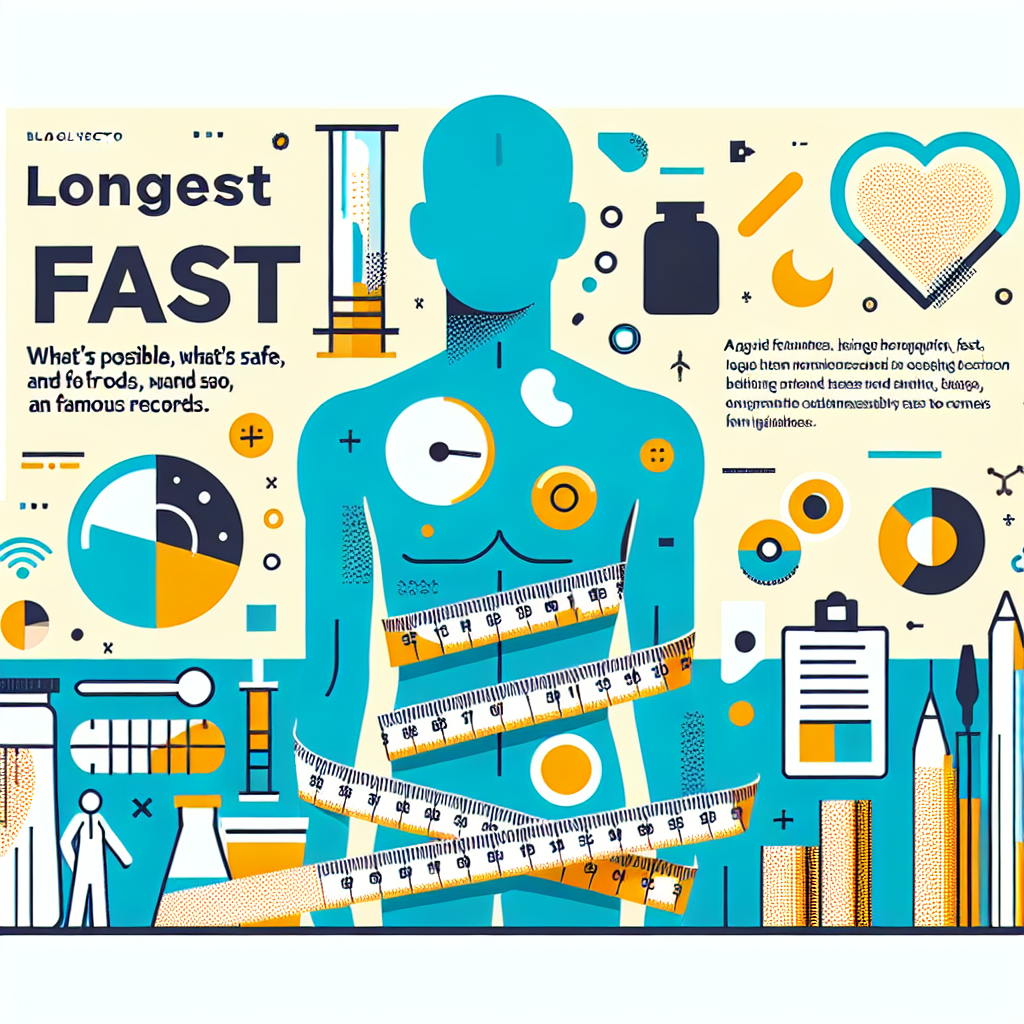Fasting has long been part of cultural, religious and therapeutic practices, and interest in extended fasting — including the longest fast people have attempted — continues to grow. Whether you are curious about historical records, the physiology behind multi-day abstinence from food, or how long a fast can be safe, this article walks through what’s been documented, what happens to the body, and practical safety considerations before trying prolonged fasting yourself.
Longest Fasting Durations and Records
Reports of prolonged starvation or intentional fasting go back centuries, but among well-documented modern cases is a supervised fast by Angus Barbieri, who reportedly fasted for 382 days under medical observation. Such extreme examples are rare, medically supervised, and not a model for unsupervised practice. If you want to read more about documented cases and historical context, see the detailed account here: Angus Barbieri’s fast. Keep in mind that many claims of the longest water fast or other multi-month fasts lack consistent medical records or involved supplemental nutrients beyond water.
How Long Can You Safely Fast?
The safe duration of a fast varies by individual health status, body fat reserves, hydration, and whether electrolytes and vitamins are supplemented. Short fasts (12–24 hours) are commonly used for metabolic benefits and are low risk for healthy adults. Multi-day fasts (48–96 hours) carry higher risks and should be approached with planning. Anything beyond several days often requires medical oversight to monitor electrolytes, kidney function, and signs of refeeding syndrome when food is reintroduced.
What Happens to Your Body During an Extended Fast
- Early phase (up to ~24 hours): glycogen stores are used for energy; blood sugar is maintained by the liver.
- Transition (1–3 days): glycogen depletes and the body increases gluconeogenesis and lipolysis, starting to produce ketones as an alternative fuel.
- Prolonged fasting (several days+): ketosis deepens, protein breakdown can increase if dietary protein is not supplied, and micronutrient deficiencies or electrolyte imbalances may develop without supplementation.
These physiological stages explain both potential benefits (autophagy, fat loss, improved insulin sensitivity) and the risks (muscle loss, low sodium or potassium, hypotension, dizziness). The term longest water fast specifically implies consumption of only water, which increases the chance of nutrient and electrolyte deficits compared with medically supervised fasts that include supplements.
When to Consider Medical Supervision
If you are contemplating anything beyond a daytime fast, consult a clinician. People with diabetes, heart conditions, kidney problems, eating disorders, pregnant or breastfeeding women, and individuals on prescription medications need tailored medical advice. Supervised therapeutic fasts often include regular blood tests, electrolyte replacement, and a plan for gradual refeeding to reduce the risk of serious complications.
Practical Guidance Before Trying Multi-Day Fasts
- Talk to a healthcare provider and get baseline labs (electrolytes, renal and liver function, blood glucose).
- Plan for hydration and electrolyte supplementation; water alone may not be enough for extended periods.
- Avoid intense exercise and high-risk activities while fasting; orthostatic dizziness and fatigue are common.
- Have a clear refeeding plan—start with small, easily digestible meals and avoid sudden high-carbohydrate loads.
- Learn warning signs that require immediate care: severe weakness, fainting, palpitations, seizures, confusion, or rapid weight loss.
For those interested in a supervised multi-day approach with practical steps for a four-day fast, see our 96-hour fast safety guide which outlines preparation, monitoring, and how to break the fast safely.
Balancing Curiosity with Caution
Understanding the motivations behind attempting an extended fast—religious practice, experimental self-care, or therapeutic intent—is important. Documented extremes like the longest fasts on record are exceptional and often involved close medical monitoring. Most people seeking health benefits can achieve measurable improvements through intermittent fasting, calorie-restricted diets, and supervised short-term fasts without exposing themselves to the significant risks of prolonged, unsupervised fasting.
- Takeaways:
- Extended fasts can produce metabolic effects, but duration and safety depend on individual health and supervision.
- Records like the 382-day case are exceptional, medically supervised, and not a model for self-directed fasting.
- Water-only fasts increase risk of electrolyte imbalance; consider supplementation and clinical monitoring.
FAQ: Is a 7-day water fast safe for most people?
A 7-day water-only fast increases risk for electrolyte disturbances, dehydration, and organ stress in many people. It may be tolerated by some under close medical supervision, but it is not recommended for most individuals without prior medical evaluation and monitoring.
FAQ: What are the main dangers of very long fasts?
Main dangers include electrolyte imbalances (especially low potassium and sodium), refeeding syndrome when eating resumes, excessive muscle loss, hypotension, and complications related to underlying medical conditions. Regular lab monitoring and a staged refeeding plan lessen these risks.
FAQ: Can short, repeated fasts provide benefits without high risk?
Yes. Intermittent fasting patterns (such as 16:8 or alternate-day modified fasting) have evidence for metabolic benefits with lower risk than prolonged fasting, especially when combined with balanced nutrition on non-fasting days and medical oversight when needed.






